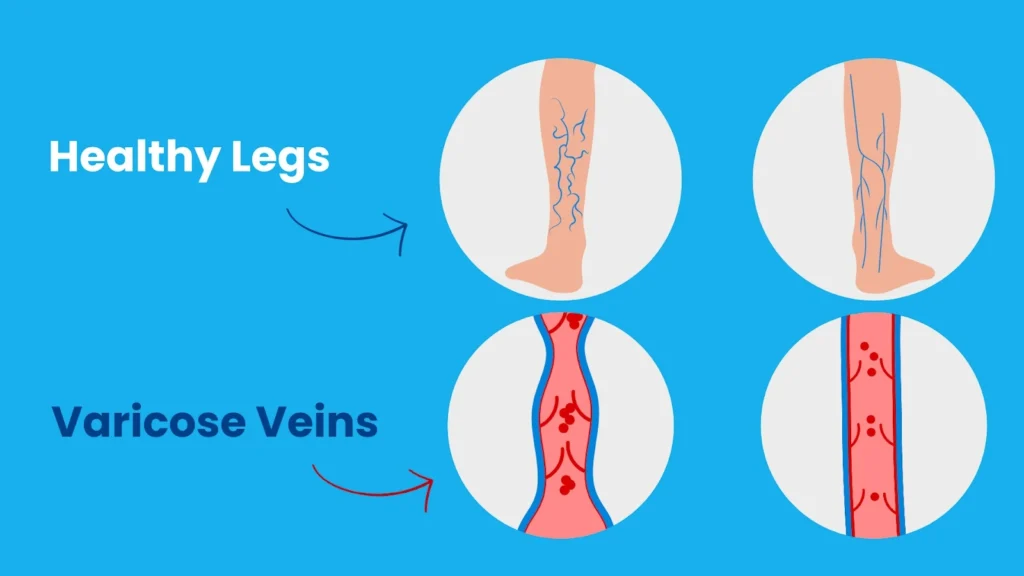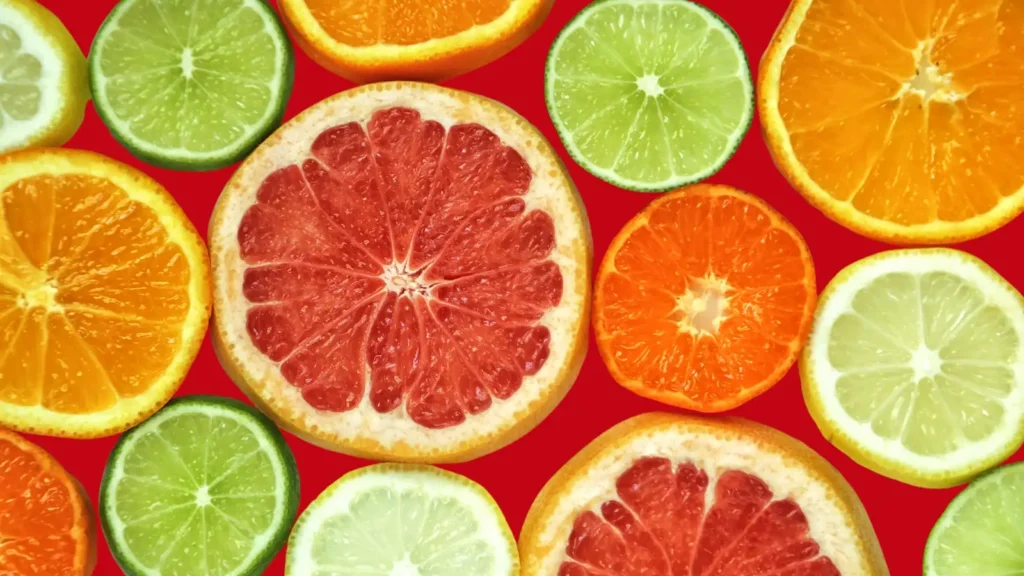Maybe you suffer from pain, cramps, and discomfort in your lower legs or have “spider veins.” Or your legs are developing a “leathery” texture.
Does this sound like you? You might be experiencing the beginnings of venous insufficiency.
Nearly 2.5 million people experience venous insufficiency in the United States according to the American Heart Association. 20% of these people will go on to develop ulcers.
Medications and compression stockings can help. However, you can help overcome this disease and even prevent it in the first place with a proper diet.
In this post, we’ll share which foods can improve venous insufficiency symptoms–or help you avoid a diagnosis altogether.
Table of Contents
ToggleIntroduction to Venous Insufficiency
Before we dive into diet, let’s explain venous insufficiency and its effects on your body.
Venous insufficiency is caused by defective valves in the veins of our legs. These valves help blood back up to the heart. However, with venous insufficiency, the damaged valves leak and cause blood to pool in your legs(1).

This pooled blood can cause clots to develop. These clots can turn into a dangerous condition called deep vein thrombosis, or DVT.
DVT is a precursor of venous insufficiency. Other examples include trauma, hormonal changes, and prolonged standing.
Risk Factors for Venous Insufficiency

Like any disease, venous insufficiency has both modifiable and non-modifiable risk factors:
Non-modifiable risk factors are risks we cannot change. While venous insufficiency is not guaranteed, you will always have that risk of developing it no matter what. Some factors include age, genetics, and family history of vein disease.
Modifiable risk factors are factors we can control, like diet, lifestyle, and weight. You can reduce these risk factors, thus reducing your risk of developing venous insufficiency.
Other modifiable risk factors include smoking, pregnancy, and a sedentary lifestyle.
Venous Insufficiency Diagnosis
When evaluating for venous insufficiency, your doctor will review your medical history and ask about your symptoms.
The doctor might perform a physical exam and measure the blood pressure of your limbs. (The latter will be avoided if you have a history of DVT.)
To rule out other vein diseases, they may order imaging to examine blood flow, and possibly follow up with other testing(3).
Management of Venous Insufficiency
The U.S. Food and Drug Administration has not yet approved any medications to treat venous insufficiency. Compression stockings are the standard treatment recommendation(4). These stockings apply high compression at the ankle which decreases up the leg. This helps prevent blood reflux(5).
In severe cases, patients are advised to undergo surgical treatment. Examples include sclerotherapy, vein ligation stripping, and radiofrequency ablation. Doctors might also recommend rehabilitation for those with severe venous insufficiency(6).
Lifestyle changes are often recommended, like exercising and avoiding smoking(1), or…
Diet Recommendations for Venous Insufficiency
Making dietary changes can help with venous insufficiency. Having a balanced diet is important not only for vein health but also for our overall well-being. The foods we eat can significantly reduce the risk of contracting diseases.
Here are some changes to make to improve venous insufficiency symptoms:
Drink More Water

Water is essential in our diet. Our bodies are made of up to 60% water, and our brain, lungs, and heart are partially water. Water helps regulate our temperature through sweating and breathing.
Water is also important for vein health. Water, along with fiber, reduces the risk of venous insufficiency by helping to flush out waste. Plus, staying hydrated helps reduce venous insufficiency symptoms.
Less Salt, More Potassium
Sodium (or salt) and potassium are basic electrolytes. Salt and potassium help maintain our blood and fluid volume.
Diets with too much salt are linked to high blood pressure, increasing the risk of hypertension and cardiovascular diseases(7).
Potassium, on the other hand, can help reduce these risks. In the human body, when potassium moves into your cells, salt moves out of them.
Salt has a large role in preserving food and enhancing taste and texture. However many processed foods today have an abundance of salt, and it can be challenging to avoid. Natural foods have less salt content.
Our diet only calls for about 2 grams of salty food per day, so limit foods like:
- Processed meats
- Chips
- Canned goods
- Condiments
- Cheeses
- Instant noodles
- Instant meals
- Salty snacks (processed nuts, seeds, pretzels, popcorn, or crackers)
Foods rich in potassium are easily available–we often take them for granted. Eat potassium-rich foods like:
- Bananas, watermelon, honeydew, and cantaloupe
- Dried fruits like prunes, dates, and raisins
- Potatoes (and sweet potatoes!)
- Cooked spinach and broccoli
- Green, leafy vegetables
- Mushrooms
- Peas
- Eggplant
- Pumpkins
- Peas
- Orange, tomato, prune, and grapefruit juices
- Fish (cod, tuna, trout)
- Beans and legumes
When it comes to vein health, reducing salt intake and increasing potassium is crucial. (You’ll even reduce your risk of stroke or other cardiovascular diseases!)
High Fiber Diet

Dietary fiber is a broad term describing several ingredients and nutrients that help you digest food more slowly. Increasing fiber intake reduces your risk of developing diseases like type 2 diabetes, heart disease, cancer, and cardiovascular diseases.
Dietary fiber helps in a few ways:
- It adds bulk to your diet, making you feel full faster, and reducing appetite and cravings.
- It absorbs water and traps carbohydrates to reduce sugar absorption. This lowers blood sugar levels–and your risk for diabetes.
- It speeds up the passage of food through your gastrointestinal tract and adds bulk to the stool. This cleans your colon and prevents constipation, which decreases your chance of developing rectal hemorrhoids.
- And lastly, fiber stimulates intestinal fermentation. This adds good bacteria to the intestine, reducing the risk of colorectal cancer.
But how does this connect to vein health?
Varicose veins are made worse by being overweight. Dietary fiber helps you lose or maintain weight. And, by helping prevent constipation, it reduces strain on our veins.
Dietary fiber is either water-insoluble or water-soluble:
Water-insoluble dietary fibers are less fermented. You can find these in vegetables, wheat, bran, agar, flaxseeds, green beans, and peas.
Water-soluble dietary fibers are well fermented. These are in fruits, vegetables, legumes, potatoes, seaweed extracts, and plant extracts.
Foods like breakfast cereals and baked goods are sometimes fortified with dietary.
Add fiber-rich food to your diet to improve your health and well-being.
Add Flavonoids

If you’re familiar with antioxidants, you may have heard of flavonoids. Flavonoids help antioxidants protect the body from oxidative stress. This stress can cause inflammation, leading to disease(9).
Flavonoids have anti-inflammatory effects on the body by scavenging for free radicals, which are atoms that can damage the body. Flavonoids seek out these atoms and eliminate them(10).
Some flavonoids also help strengthen blood vessels and may help fight Alzheimer’s disease and cancer. They’ve also shown promising effects in treating cardiovascular diseases(11).
Studies also show that flavonoid deficiency may cause capillaries to become fragile(11). Supplying our body with the right amount of nutrients can reduce this fragility. Adding flavonoids to your diet can also help ease leg discomfort and edema.
Vegetables, fruits, and plant-based beverages contain flavonoids(9). These are often bright and vibrant in color:
- Peppers
- Spinach
- Broccoli
- Brussels sprouts
- Apple
- Citrus (lemon, lime and orange)
- Berries
- Peaches
- Vinegar
- Soybeans and tofu
- Cucumbers
- Milk
- Chocolates
- Green tea, black tea, oolong tea
Add a bit of color to your plate to help improve your vein health!
Conclusion
While our blood vessels may be small, they play a big role in our bodies. It’s important to take care of them. One spider vein on your ankle now can develop into a larger health issue later.
Fortunately, managing your diet is one of the simplest ways you can manage your health. But it’s easy to get off track. While a treat here and there is enjoyable, getting the proper nutrients is essential for living a healthy life.
Fortunately, nature provides what we need through whole foods, and you now know what foods to incorporate into your meals for optimal vein health.
Looking to learn more about treatment options for venous insufficiency? The vein health experts at Texas Vein Experts are here to help. We will evaluate your current condition to determine the best habits at home to build and recommend medical treatment if needed. Texas Vein Experts has offices in Phoenix, Chandler, Gilbert, Mesa, Scottsdale, Tempe, and Peoria. Take control of your health: book your free consultation today!
References:
- Spiridon, M., & Corduneanu, D. (2017). Chronic Venous Insufficiency: a frequently underdiagnosed and undertreated pathology. Maedica, 12(1), 59–61.
- Patel S. K., Surowiec S. M. (2020) Venous Insufficiency. StatPearls. Treasure Island: StatPearls Publishing
- Necas M. (2010). Duplex ultrasound in the assessment of lower extremity venous insufficiency. Australasian journal of ultrasound in medicine, 13(4), 37–45.
- Weiss, R., Anariba, D. E. Z., Lanza, J., & Lessnau, K. D. (2018). Venous insufficiency. Retrieved from https://emedicine.medscape.com/article/1085412-treatment
- Lim, C. S., & Davies, A. H. (2014). Graduated compression stockings. CMAJ : Canadian Medical Association journal = journal de l’Association medicale canadienne, 186(10), E391–E398. https://doi.org/10.1503/cmaj.131281
- Kahle B., Leng K. (2004) Efficacy of sclerotherapy in varicose veins: prospective, blinded, placebo-controlled study. Dermatol Surg. 30:723–728.
- Aaron, K. J., & Sanders, P. W. (2013). Role of dietary salt and potassium intake in cardiovascular health and disease: a review of the evidence. Mayo Clinic proceedings, 88(9), 987–995. https://doi.org/10.1016/j.mayocp.2013.06.005
- Kaczmarczyk, M. M., Miller, M. J., & Freund, G. G. (2012). The health benefits of dietary fiber: beyond the usual suspects of type 2 diabetes mellitus, cardiovascular disease and colon cancer. Metabolism: clinical and experimental, 61(8), 1058–1066. https://doi.org/10.1016/j.metabol.2012.01.017
- Panche, A. N., Diwan, A. D., & Chandra, S. R. (2016). Flavonoids: an overview. Journal of nutritional science, 5, e47. https://doi.org/10.1017/jns.2016.41
- Kumar, S., & Pandey, A. K. (2013). Chemistry and biological activities of flavonoids: an overview. TheScientificWorldJournal, 2013, 162750. https://doi.org/10.1155/2013/162750
- Rabe, E., et al. (2013). Treatment of chronic venous disease with flavonoids: Recommendations for treatment and further studies. Phlebology / Venous Forum of the Royal Society of Medicine. 28. 10.1177/0268355512471929.




